Southern England and Wales
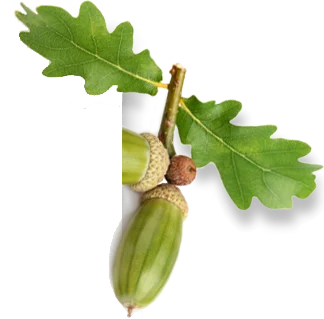
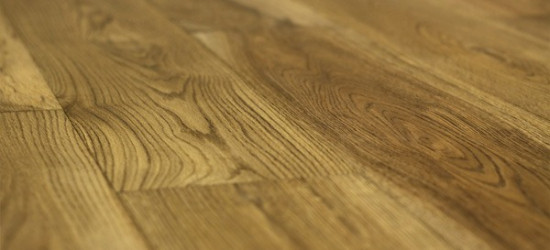
Common Names: Brown oak, English oak, European oak, French oak
Botanical Name: Quercus robur
Origin: Northern Hemisphere
Colour: Most European and English oak is light to dark brown in colour
Hardness: 1360 lbf (pounds force)
Workability: Stable when dried, can be sanded very smoothly, holds nails very well, easy to glue.
Availability: In abundance with huge choice of various oak floors, length, width and grain.
Durability: Good wear resistance, there are many centuries old Oak floors around.
Colour Changes: Naturally becomes dark to very dark brown over time.
Notes: Oak has been the preferred material for the constructions of ships and houses because of its strength and flexibility and its resistance to insect attacks. It is also widely used in winemaking due its ability to alter the taste of wine. The vast majority of wood flooring is made of oak mainly due to the appeal from the combination of grain and colour. Oak is valued its suitability to most wall and ceiling paint colours and wallpapers.
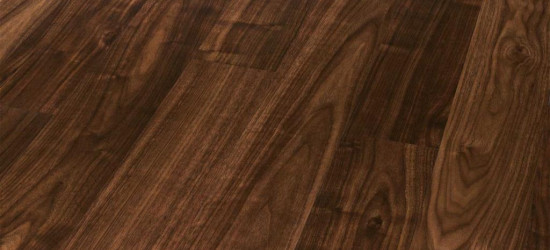
Common Names: European Walnut
Botanical Name: Junglas regia
Origin: Western China, Northern India
Colour: Generally dark chocolate but varies, some parts can be light cream, some very dark almost black in appearance.
Hardness: 1215 lbf (pounds force)
Workability: Softer than oak and therefore easier to drill in. Holds nails relatively well. Prone to cracks and splinters.
Availability: It is available on the market from a number of different outlets with variable quality of manufacture. Quite popular as engineered.
Durability: Very high natural durability. Dense wood which will not wear easily.
Colour Changes: It does not change much in colour over time as it is already quite dark.
Notes: Walnut has been widely distributed throughout the world. Largest forest in Europe are in Kyrgyzstan. Makes an absolutely spectacular floor with vivid dark brown, cream and even purple colours. The grain variety is infinite and most planks are truly unique. Great for contrasting with light coloured walls.
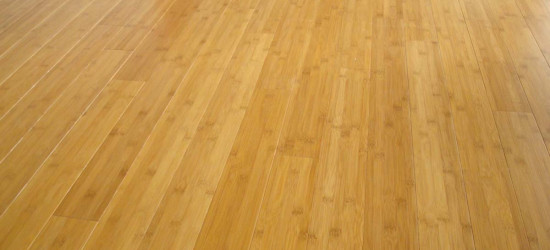
Common Names: Bamboo
Botanical Name: Phyllostachys Edulis
Origin: China
Colour: Light cream colour. Red if steamed.
Hardness: 1380 lbf (pounds force)
Workability: Excellent properties, can be glued and nailed very well. Can be sanded very smooth without sanding marks.
Availability: Widely available. Mostly manufactured in China in narrow boards, around 90mm in width.
Durability: Very hardwearing and tough
Colour Changes: Would darken marginally over a few years
Notes: Moso bamboo is a rapidly growing plant. It can grow up to 1.2m in a day and up to 23m in 40 days. For this, it is considered very environmentally friendly as it is quickly renewable. In addition to this, it does not require replanting because the root system is not damaged during harvesting. As flooring, bamboo is generally 14mm thick as opposed to the standard 20mm for traditional species. It comes in mainly two shades: light cream and light pink/red colour if it has been steamed. The structure consists of a number of bamboo shoots pressurised and glued together to form a stable plank. Bamboo flooring is very homogenous in grain and consistent in colour and is therefore very suitable for modern properties.
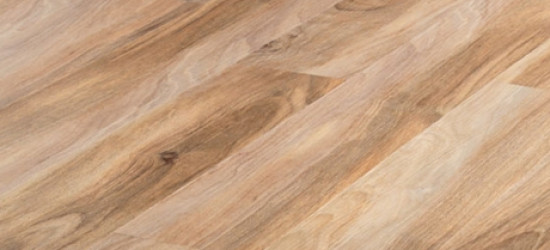
Common Names: English Elm
Botanical Name: Ulmus Procera
Origin: Originates in Asia. It was distributed to Britain by the Romans and has established itself throughout Europe.
Colour: Generally light cream and brown tones, however there is a huge variety of shades. Overall appearance is very colourful with interlocking grain.
Hardness: 800 lbf (pounds force)
Workability: Softer than oak. Sands and glues very well. Holds nails well.
Availability: Due to the scarcity of material, it is not widely available as a floor. Generally produced in mills across England to a special order.
Durability: Fairly durable and hardwearing, similar to oak.
Colour Changes: It will go much darker over time with deep brown and honey colours.
Notes: The largest ever tree in Britain was near Tewkesbury and it was 46m tall. Currently, the two largest trees are in Brighton. The vast majority of trees worldwide have been destroyed by Dutch Elm disease. Elm is rare as a floor and generally resembles the overall appearance of oak with much greater variety of colours within the brown tones. It makes an exquisite floor with golden colours and unique effects under direct sunlight.

Common Names: Beech, Beechwood
Botanical Name: Fagus Sylvatica
Origin: Native to Europe, Asia and North America
Colour: Cream with notes of light red, much redder if steamed
Hardness: 1300 lbf (pounds force)
Workability: Similar to oak in hardness and workability. Easy to sand smooth and holds nails very well.
Availability: Available on the market in solid boards or narrow solid strips
Durability: Very hardwearing, will last for many years.
Colour Changes: Darkens with age, brown and dark yellow is added to it.
Notes: Beech is excellent for firewood as it burns for hours giving a lovely flame. It is also used in boat construction. Beech was introduced to Great Britain relatively late, after the last glacial period. Available widely, however choice is not great. Makes a great floor in the red tones.

Common Names: Mahogany
Botanical Name: Swietenia Mahagoni
Origin: Throughout tropical S. America / C. America / Caribbean and in plantations in the Far East. Wide distribution, from southern Mexico southward through Central America down to Argentina.
Colour: Honduran Mahogany offers a medium degree of color variability from pale orange/browns through to darker orangey browns.
Hardness: 1450 lbf (pound force)
Workability: Because of its hardness, which can make sawing and machining difficult, carbide tooling is recommended for santos mahogany wood flooring. It sands beautifully to a high natural polish, however, and has good holding ability.
Availability: It is not widely available as it is a protected species. True Mahogany is likely to come in the form of reclaimed parquet blocks or boards.
Durability: Excellent durabilty, will last for many years.
Colour Changes: Honduran Mahogany, and santos mahogany wood flooring undergoes a large degree of color change, with pronounced darkening from a light orangey brown when fresh cut to deep mahogany colour as it fully ages.
Notes: Mahogany is known for its strength and beauty, and it has outstanding durability. Given its hardness and colour-fastness, santos mahogany is a superior choice to genuine Honduran mahogany (Swietenia macrophylla), which it closely resembles in color. In fact, although genuine mahogany is traditionally chosen for fine furniture and millwork, it is seldom used in wood flooring because it lacks sufficient hardness to withstand constant foot traffic. The very fine and even texture of this well-known and popular hardwood, along with its striped figuring, complements the attractive dark reddish brown color of mahogany wood flooring. The white sapwood is sharply demarcated from the heartwood. The grain of mahogany is typically interlocked, and the surface can have a medium to high luster. When freshly cut, it has a pleasant spicy scent.
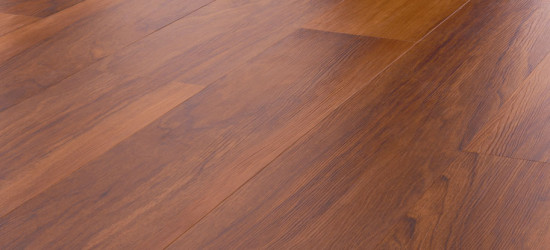
Common Names: Merbau, Kwila, Ipil
Botanical Name: Intsia bijuga
Origin: Southeast Asia, western Pacific islands, and Australia
Colour: The heartwood is yellowish to orange-brown initially, but it matures into brown or dark red-brown.
Hardness: 1710 lbf (pound force)
Workability: Glues and finishes well, though it can be difficult to saw due to gumming and dulling of teeth.
Availability: Merbau is available in Solid and Engineered boards and is popular in paquet blocks. It is inexpensive, priced similarly to oak.
Durability: Generally reputed to have good durability; heartwood highly resistant to termite attack but susceptible to marine borers. Sapwood prone to powder-post beetle attack. Heartwood is impermeable to preservatives, but the sapwood is treatable.
Colour Changes: It will not change colour match as it is very dark, some sections almost black in appearance.
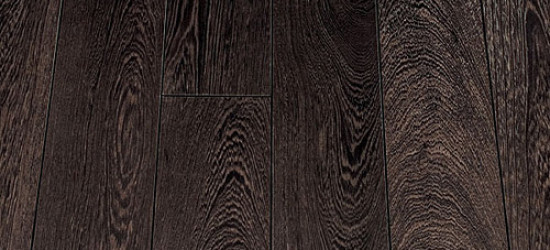
Common Names: Wenge, African Rosewood
Botanical Name: Millettia laurentii
Origin: Wenge is a tropical timber specie and is native to the countries of equatorial Africa.
Colour: Very dark in color with a distinctive figure and a strong partridge wood pattern. The wood is heavy and hard.
Hardness: 1630 lbf (pound force)
Workability: It makes for spectacular wood floors, whether boards or herringbone parquet. It sands very smooth.
Availability: Available in Solid or Engineered boards as well as blocks for parquet designs.
Durability: Very hard wood, will last for many years.
Colour Changes: Will not change colour much as it is very dark, almost black in places.
Notes: When Prime grade Wenge is very consistent in colour, it gives a fantastic dark shade with incredible reflections on direct sunlight.